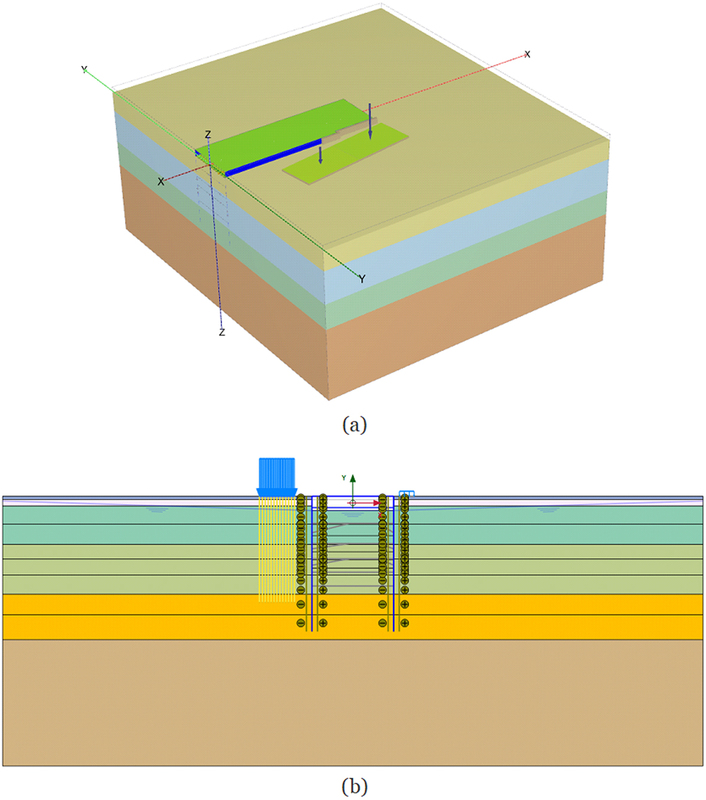Evaluation of using hardening soil model for predicting wall deflections cause by deep excavation: A case study at the Ho Chi Minh metro line 1, Vietnam
1
Faculty of Engineering, China University of Geosciences (Wuhan), No. 388 Lumo Road, Wuhan 430074, Hubei, China
2
Faculty of Engineering, China University of Geosciences (Wuhan), China
Submission date: 2023-06-23
Final revision date: 2023-08-17
Acceptance date: 2023-09-12
Publication date: 2024-04-02
Corresponding author
YAO CHENG
Faculty of Engineering, China University of Geosciences (Wuhan), No. 388 Lumo Road, Wuhan, China
Faculty of Engineering, China University of Geosciences (Wuhan), No. 388 Lumo Road, Wuhan, China
Archives of Civil Engineering 2024;70(1):357-373
KEYWORDS
TOPICS
ABSTRACT
The goal of this study is to assess the application of the Hardening soil model in predicting the deformation of retaining walls of excavations in 2D and 3D finite element analysis at the Ho Chi Minh Metro project. Designed as the deepest underground station in the first metro line built in HCMC, Opera House station is located in an area with a dense building zone and close to historical buildings. A summary of the input soil properties is provided using data from site investigations, in-situ tests, and laboratory tests. By numerical simulation using the Hardening soil model, the parameters of the soil stiffness modulus value are verified based on the Standard Penetration Test (SPT), and Pressuremeter Test (PMT). The obtained results of the numerical analysis by 2D and 3D finite element methods, and field observations indicate that applying the Hardening soil model with soil stiffness modulus obtained in situ tests gives reasonable results on the displacement of the retaining wall at the final phase. The relationship between the SPT value and the stiffness modulus of HCMC sand is a function of depth. This value is an experiment through comparison with the wall deflection monitoring of each excavation phase and ground settlement surrounding. The results of the difference between 2D and 3D finite element analysis also will be discussed in this study.
Share
RELATED ARTICLE
We process personal data collected when visiting the website. The function of obtaining information about users and their behavior is carried out by voluntarily entered information in forms and saving cookies in end devices. Data, including cookies, are used to provide services, improve the user experience and to analyze the traffic in accordance with the Privacy policy. Data are also collected and processed by Google Analytics tool (more).
You can change cookies settings in your browser. Restricted use of cookies in the browser configuration may affect some functionalities of the website.
You can change cookies settings in your browser. Restricted use of cookies in the browser configuration may affect some functionalities of the website.




